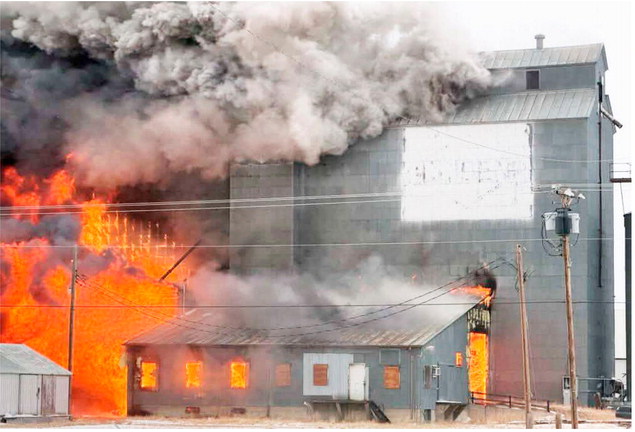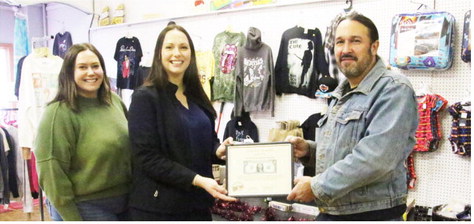Numbers Increase To 1,200 Head As Fort Peck Tribes Invest In Ranch


Members of the Fort Peck Tribal Executive Board saw a recent investment first hand when they spent time at the tribal farm and ranch, located near Oswego, on Wednesday, Aug. 6.
TEB member Roxanne Gourneau explained that former land chairman Walter Clark had a vision of having 1,000 head of cattle at the tribal ranch during the late 1990s. At that time, only 500 head could be purchased. With positive goals for the reservation in mind, the tribal executive board moved forward by securing a $2 million loan to buy 600 head this past spring.
Gourneau said cattle prices started to shoot upward shortly after that. Because of the good market, it’s a possibility that the tribes might be able to retire the debt during the first year.
“Our beef is the best in the nation,” Gourneau said of cattle raised in northeastern Montana.
With the tribes’ new processing plant planned to being built within the next year, the intent is to process cattle, buffalo and pigs at the facility. “It’s food sovereignty,” Gourneau noted.
TEB member Dana Buckles also expressed excitement of the changes being made at the ranch. “I foresee that it will go well. We have the land and everything for it. Mr. Forsness does a good job at it. We can do all we can to assist them.”
Other TEB members at the meeting included Terry Rattling Thunder Jr. and Stacey Summers. Additional officials attending to visit with tribal ranch manager Brandon Forsness included Elmer DeCoteau, chairman of Fort Peck Inc., Doug Grandchamp of the tribal range and Myrna Walking Eagle, director of the tribal range.
DeCoteau said of the project, “We’re moving forward like we haven’t done before in previous years.”
The tour was conducted to make sure the process was heading in the right directions and how tribal officials can assist in anyway. Tribal leaders wish to answer the public’s comments in an informed matter.
Regarding some comments being circulated about cows not doing well at the ranch, Forsness said six short-term cows didn’t make it through the winter but that happens. Last week, arrangements were being made to have three yearlings receive medical treatment.
“We feed way heavier now than in the past,” he said. “We keep our cows in the best shape.”
Forsness added that the ranch lost less than 7 percent of its cows during the year. The industry standard is 10 percent.
“Anytime, I can stay under 10, that’s a win according to experts,” he said. “I try to stay under 5 percent.”
The hope is that the selling of beef will allow the ranch to purchase newer equipment after paying off the entire loan debt. Beef prices are anticipated to stay high until 2029 or 2031.
Gourneau says her goal is to someday have 2,000 head. The current number is 1,086 mother cows and 123 yearlings.
One challenge is the large amount of land that the ranch covers. One pasture is 55 miles away from the shop.
Gourneau says an operational plan is needed. Aims include land purchases and consolidation.
“It’s killing us right now to have the land scattered,” she said. The benefit of applying for grants was also discussed. “We need to help to take advantage of our opportunities,” Gourneau added.
There was also discussion of using a tribal owned feedlot during the meeting.
“I think we will be in great shape in five years,” Gourneau said. “We want to maximize what we have.”
The meeting included a tour of range unit 21 which features 174 cows.
Forsness noted, “True sovereignty, that’s the goal.”



